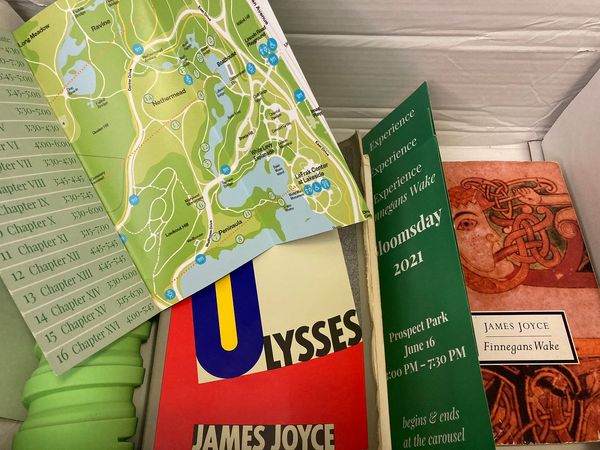Starts and Stops in Reading Digital Literature
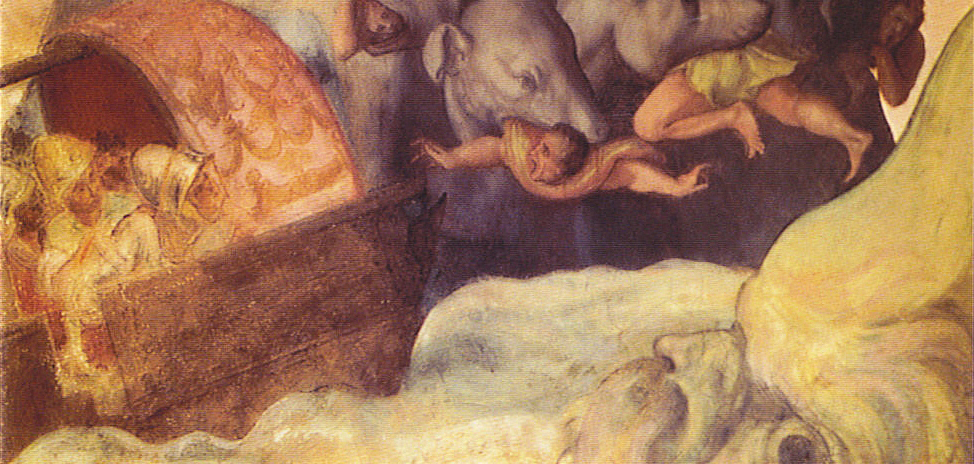
PreCursor Monthly – June 2021
This is the start of Year II of me doing this monthly newsletter charting lines of continuity between literature old and new, print and electronic. Despite making those broad connections across centuries, however, this entry is focused on a big picture issue I think about a lot:
Occasionally, some digital literary text goes viral, garnering millions of views / plays / reads. There have been many examples of this over the years – but then, why does hardly anyone seem to know what "digital literature" or "electronic literature" or "computer-based literature" is? Then because of that, millions of people will read one thing, then have no pipeline to similar further reading.
Popular guesses when I mention my research focus: "Like Kindle ebooks?" or "Like PDF?" or "Like Instagram poetry?" (see my previous post on Instagram poetry here). Even within academic and other professional contexts – speaking to people whose lives are built around expertise in contemporary fiction or contemporary poetry – there are often massive gaps around anything that cannot be rendered in book form.
A Brief Timeline of Digital Literature
This is not a complete timeline, but just a few revealing examples:
- Christopher Strachey wrote an algorithmic text generating little love-letters in 1952.
- The Oregon Trail, played by millions in a later graphical remake, was first released as a text-only work in 1971. Aaron A. Reed takes this as the starting point of his excellent 50 Years of Text Games Substack project.
- The first interactive fiction work – allowing readers to type short commands to control the story – was Colossal Cave Adventure in 1976.
- In 1986, Judy Malloy developed the hypertext narrative Uncle Roger, using nodes for non-sequential storytelling.
None of these is a one-off blip; they are all early points in forms which have been regularly used now for decades. Slightly less curated, here are some examples of widely-experienced more contemporary works:
- Façade (2005) – a social game driven by player-written dialogue – has been widely shared and played, plus tens of millions of views on YouTube.
- In the 2000s, games, videos, and all sorts of interactive works using Flash were popular online. This was my first introduction to what Internet content entailed, seemingly something between a noise-making toy and the television. (Support for Flash, unfortunately, ended in January of this year.) Within this, though, were a number of more narrative, and sometimes particularly literary works. Jason Nelson's poetic projects in this form – such as Game, game, game, and again game (2007) – were game enough and wild enough to reach millions as well.
- Homestuck (2009-2016) – a webcomic with a communal interactive fiction premise, hypertext elements, Flash elements, game elements, and more – had millions of very active fans, whose concentrated attention was at one point too much for the popular site Newgrounds.
- Jon Bois' 17776 (2017) – a story designed around text, GIFs, and video speculating an outrageous future for football (or, really, humanity, whose frame of meaning is then wrapped up around football) – reached over two million people in just its first day, through initially disguising itself as a real article on the real sports website SB Nation, with the article page quickly transforming into this very different kind of story. People felt compelled to share it.
As far as I can tell, the "Twine revolution" around 2012-2013 (covered in this recent retrospective) has never reached these numbers, but these are largely unrealistic for any singular work. Combining the bullet points above gets us around the annual readership (to at least some minimal extent) of poetry, a form with centuries of momentum behind it.
Post-Game Literature
Active readership is way up in more casual forms – with many addicted to at least partially textual streams, a dynamic taken up by applications such as Hooked (2017), which got tens of millions of downloads for six minutes of daily text-based horror stories. Contrary to popular pessimistic views around seemingly shallow consumption, I see this growth as overall positive (believing this all to offer a usable framework, while others view it as mostly adding junk which will need to be scraped away before any real building can be done).
Active readership broadly is not the same as literary readership, and never will be. Reading serious, challenging literature will always be at least two major funnel rings down from reading for practical and social purposes, and below reading for light entertainment.
In contrast to the readership of poetry – even counting the 4+ million following Rupi Kaur on Instagram – the video games industry is massively larger, with games sales nearing $180 billion. The Twine revolution smartly emerged as a reaction to video games, not a return to niche electronic writing of the 90s – even though Twine's creator, Chris Klimas, started from working with interactive fiction in that earlier era. "What if video games, but feels instead of whatever Call of Duty tries to pretend is reals?" is a more long-term viable approach than trying to activate an unknown sleeper cell army of serious (digital) readers.
Narrative-heavy games, particularly text-heavy works which tell personal tales on little-to-no budget, have tended to try to carve out their space within this funnel that has, at its top, the massive games industry – to mixed success.
An identity crisis for literature in the 21st century is in an increasingly urgent need to lay claim to works which are deeply literary – or at least engage more with the literary elements of those works – but organized in a newer computer-based form rather than in books and pages. While creators seeking audiences look to the umbrella of gaming, the literary cultural world will often place the works under gaming as well, but instead seen as an appropriately lower place on a hierarchy.
The thing is, computer-based literature – specifically that which must be so, as opposed to ebooks which could have been print books if not for cost – necessarily uses different structures than linear text on linear pages. It might use that format, but it will be doing something else on top of that. These mechanics – wherever their origin – will also have at least similar potential use in electronic games. It does not make sense, however, to relegate "literature" to only a bit of textual production to be recited or printed.
In 1994, before the outpouring of thousands of small, more personally-focused hypertextual narratives – when "hypertext" referred to a small batch of experiments such as Michael Joyce's Afternoon – the American Comparative Literature Association published a report opening the field to hypertexts and more, noting,
The material form that has constituted our object of study for centuries, the book, is in the process of being transformed through computer technology and the communications revolution.
This was then bemoaned by The New Criterion as the field replacing "literature" with much more trifling "cultural productions." Afternoon, though, is entirely text-based, deeply engaged with a wide range of literary precursors, and tells a challenging, psychologically deep story. Literary elements are used throughout – but on lexias, not pages. The weight of individual word choices is further heightened by the inclusion of invisible hyperlinks. Rather than progressing in a set sequence, readers have to pay close attention to the language, narrative, characters, and more to try to intuit what Michael Joyce calls "words which yield," which are words which would connect to one of several possible next lexias.
A related challenge to all of this is that in studying emerging literature, there will always be works of a wide range of quality (down to the exceedingly boring), and studying developments in this space will always be different than studies such as of the works of William Wordsworth which have lasted the test of time.
But let it be known: It is not sufficient that a student studying the basics of fiction should learn about Jane Austen and free indirect discourse, but then nothing of any of the developments from the past half-century. Those are not going away, but the readers of such works are going away when they finish one viral work and have no clear next step.
An Aesthetic Barrier: Zany Gimmicks
In looking at the relative successes of works of digital literature, is not sufficient to just throw around numbers, however. These reading experiences need to be fit into their aesthetic frameworks.
One of the most piercing examiners of 20th and 21st century aesthetics is Sianne Ngai. In Our Aesthetic Categories (2012), she shows our world of commodities and mass media as not dominated by categories such the beautiful and sublime, but zany, cute, and interesting.
Though Ngai traces these categories through a longer, wider-reaching study, the cute and the interesting dominate much viral content online. Looking to the four popular electronic works listed above, though, we see in each case the prominence of the zany.
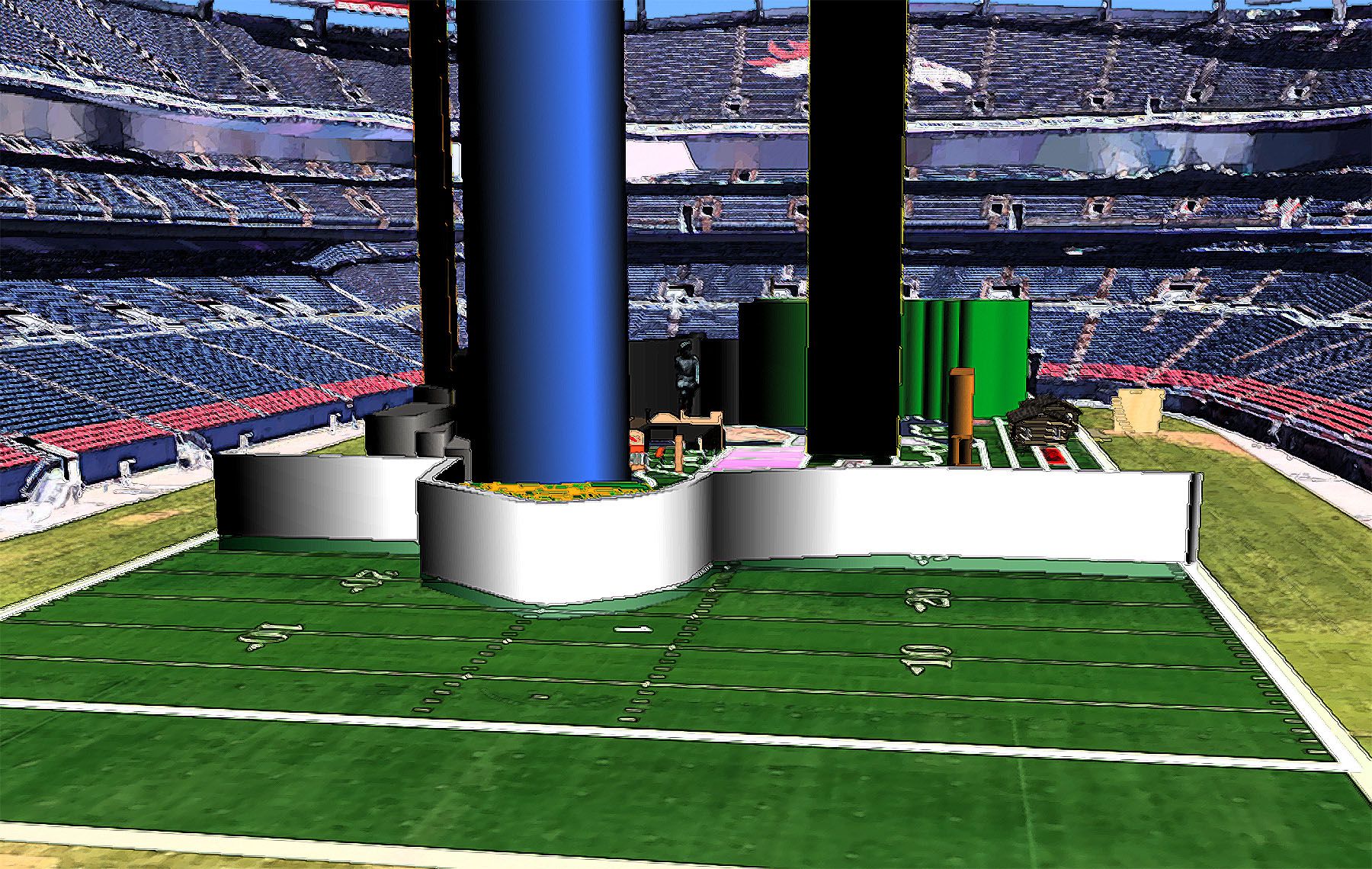
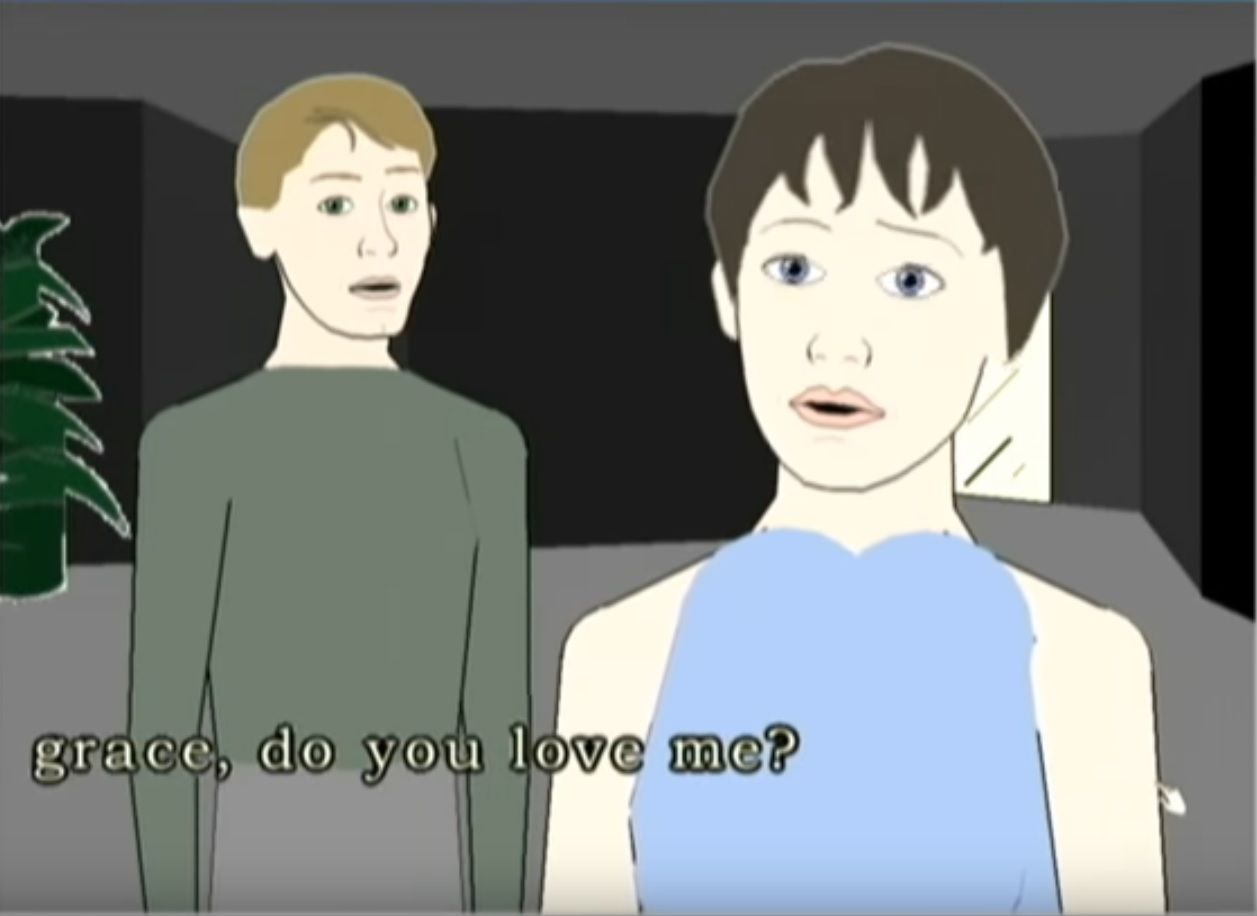
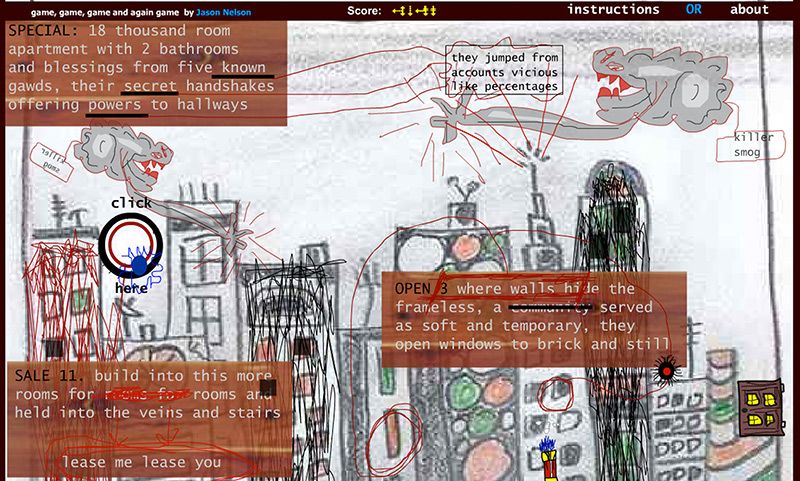
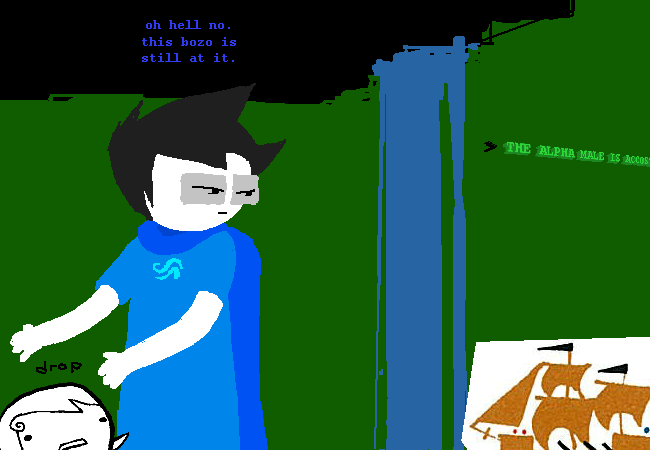
Clockwise from top-left: 17776, Façade, Homestuck, Game, Game, Game, and again Game
Zaniness is about playfulness, but it is also social: "the zany more specifically evokes the performance of affective labor – the production of affects and social relationships – as it comes to increasingly trouble the distinction between work and play."
The connection between these works and zaniness should be no surprise. For one thing, these are specifically popular works, and Ngai chooses zaniness as a major facet of our popular culture. She also notes this category as prominent in the post-1945 literary canon. Add in interaction for digital texts and now you have an even more actualized version of the sort of playfulness Ngai sees in much contemporary writing.
Read in this light, these works unsurprisingly emerge from the literary and media contexts of their time. That point bears some emphasis though: None of these is some unfathomable outlier that came out of nowhere and bears no relation to other works; rather, they are just notably successful instances of an already dominant aesthetic mode.
What enables the style of these works to be unsurprising, yet appear to most readers as something new, shocking, and needing to be shared?
Ngai develops her aesthetic theory further in Theory of the Gimmick (2020), with the gimmick as not the previous book's "missing fourth category but an undercurrent running through all three." Ngai offer this definition:
We call things gimmicks when it becomes radically uncertain if they are working too hard or too little, if they are historically backward or just as problematically advanced, if they are wonders or tricks.
As can be grasped immediately in each of the screenshots above, these electronic works all make use of aggressively unpolished design elements: the low-texture and jagged graphics in 17776, the flat and often poorly trimmed objects in Façade, the indulgences of Homestuck as very openly an "MS Paint Adventure," the childish drawings and incomprehensible score in Game. Even though these are all free works, they fall short on some level of our standards for refined technique in a work of art or major cultural production.
At the same time, these are all extravagant: a vision of an inhuman-scale future of football, a social simulation that lets you type any dialogue you want, a highly extensive comic with hundreds of pages of meta-commentary on its own creation, the flashing and overlapping chaos of a poetic work entered into the context of simple games.
One of Ngai's biggest points in emphasizing new aesthetic categories is that our aesthetic experience is inevitably and deeply caught up in how we talk about it. This is not to say that someone who did not know the term "beauty" would feel nothing looking at beautiful things, but the way we delineate things categorically impacts how we feel through shaping how we understand our experience socially.
In the case of the gimmick, there is an anxiety of being cheated or made a fool of, and so we devalue what we might elsewhere elevate as innovation, original genius, or the avant-garde. Ngai says of the gimmick, "it is what we say when we want to demonstrate that we, unlike others implicitly invoked or imagined in the same moment, are not buying into what a capitalist device is promising."
As with any novel, many hours of work clearly went into developing the narrative and graphics of 17776. In the case of a more traditional form, we are trained to place the work into categories of artistic valuation (though we may certainly see an individual work as failing in those standards). In the case of something like 17776, we may be blinded to the tradition spanning centuries of speculative fiction and only see the gimmick of its form: a multi-media web project overtaking what had appeared to be a basic article on the future of football, its sprawling graphics and scattered text vying for control of our screen space.
The Odyssey, but as One Day in Dublin
For a classic example of a literary gimmick, let's look at James Joyce's novel Ulysses (1922). The title references the hero of Homer's Odyssey, in which Odysseus/Ulysses must make his way back home (where he is suspected to be dead) to his wife, who is being overwhelmed by suitors. In Joyce's work, this is compressed to one day in Dublin, as Leopold Bloom walks around, attending to various tasks and leisurely activities, before returning to his wife, Molly, who must reaffirm her love of and desire to be married to Leopold.
Joyce takes the gimmicky nature of the novel further. Each chapter follows a different form and style, thematically linked to the content. One chapter is a (reasonably unperformable) play! In that chapter, among the core drama, inanimate objects are sometimes given lines – sometimes as onomatopoeia, sometimes in speech, and sometimes echoing advertising jingles.
Throughout the novel, Joyce is constantly playing around with words, creating the work's infamous difficulty. What the 17th-century poet John Milton described as Eve's "wanton ringlets," Joyce describes as "Her wavyavyeavyheavyeavyevyevy hair un comb : ’d." In the final chapter, in which we finally get to hear directly from Molly, with the whole chapter being her monologue, the text goes on for 36 pages with just one intervening period and no commas.
In an early review for The New York Times, Joseph Collins emphasizes that there is certainly something monumental and lasting in Ulysses, but that most readers will mainly find "bewilderment and a sense of disgust."
Joyce's idiosyncratic style captures Ngai's sense of gimmick very well. Joyce is clearly working very hard, but is his work in crafting and assembling non-words merely obscuring a lack of refined work in telling a story that's actually good? Over the past century, many have hailed the work as a wonder, while many more feel it's all tricks, stuff to occupy professors, the pretentious and masochists. Looking at this range of responses neutrally, we have just the sort of "radical uncertainty" that defines the gimmick as something which is clever, but maybe not quite in the right ways.
[See more on Joyce in my Bloomsday post last year, "Always Again Another Bloomsday," and if you're near New York City, check out the Bloomsday event I am organizing for Wednesday, June 16.]
Worldbuilding, -building, -building, and again -building
If you read Ulysses and agree with Collins, except you explicity want your next piece of reading to elicit "bewilderment and a sense of disgust," then you can't go wrong with Homestuck. The connection between this webcomic and Ulysses was popularized by Mike Rugnetta for PBS Idea Channel on YouTube.
Rugnetta makes two major points:
1) Ulysses is long at around 650 pages given the relatively slow pace it requires, and Homestuck is even longer at thousands of pages (many containing more than an average print page's worth of text, and some containing different media forms including short games).
2) Homestuck is also a challenging read – something often difficult to make popular online. Rugnetta connects the two works through the idea of "effort justification," meaning that if you struggle with something and maybe even hate it at times, the sense of accomplishment at reaching the end will mean that you ultimately feel satisfied.
Rather than bewildering you with complex language, however, Homestuck mainly bewilders through a convoluted plot that sometimes makes absurd jumps, sometimes retcons itself (actively, as part of an ongoing narrative), and a sprawling cast with variant versions of those characters and a complex set of relationships between characters.
The challenge of Homestuck did not deter its large readership, however, because it emerges from the work's playful zaniness. Starting as a communal interactive fiction work, sometimes the action connecting two pages would be random, crude, or downright impossible. Control is eventually taken away from the readers and given to various in-universe characters, including a fictionalized version of the comic's creator, Andew Hussie, himself – but the fanbase could still guide the story through applying pressure on the development of what was a long-term serialized narrative or simply being satirized by an increasing number of characters.
Ultimately, I would recommend both Ulysses and Homestuck, but for different reasons, and to a very narrowly overlapping Venn diagram of readers.
Certainly at least, I find the first few acts of Homestuck worthwhile. As the kids are setting up their online game and chatting virtually, it is a rare and compelling depiction of such a world, particularly within this age bracket – and one which recognizes the complex world of feelings, perception, and dreams.
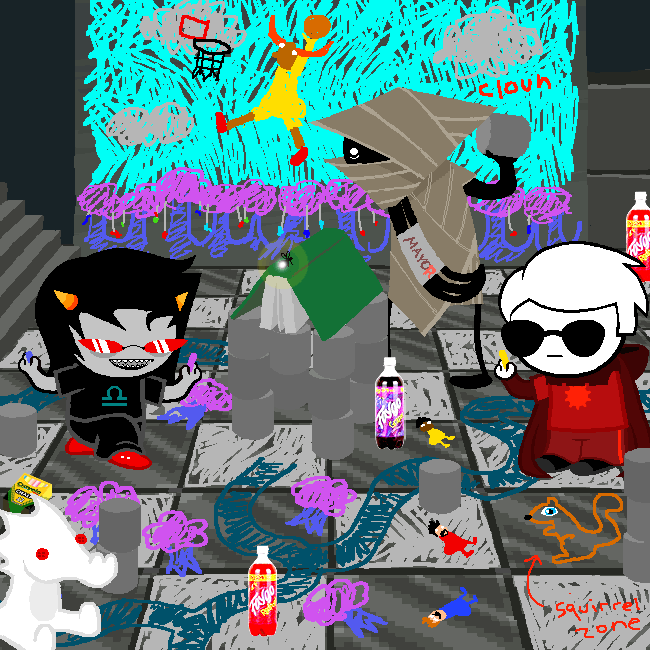
As the work goes on and continually expands, I am reminded of William Gibson's description of "cyberspace" as a "consensus hallucination." As different worlds, species, and universes emerge, Homestuck shows how different communities can form their own distinct shape to that hallucination and how those "realities" can clash in a shared overarching cyber"space."
A Digital Voyage Home and Its Hazards
Where readers of Ulysses and Homestuck might converge is in the newly published A Web Odyssey by Serge Bouchardon.
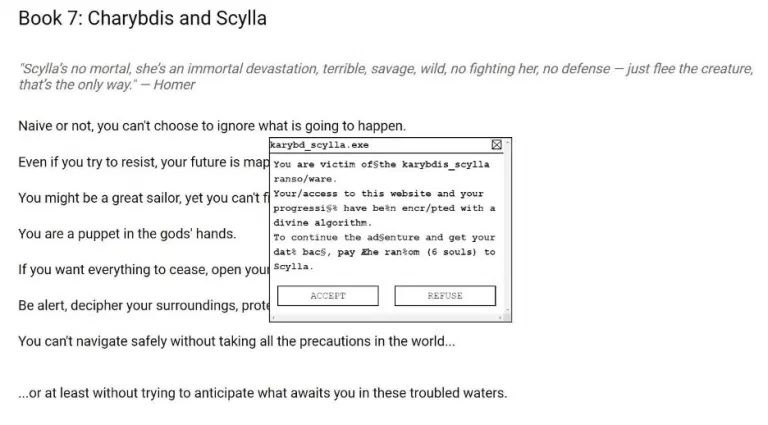
Reworking key points in the narrative of Homer's Odyssey in his own way, Bouchardon reworks those earlier mythological figures and trials into digital ones. The work requires interactions, passwords, access to your webcam (and blocking of your webcam), and more. As described in Bouchardon's author bio, "he is interested in the way the gestures specific to the Digital contribute to the construction of meaning."
Why is it, though, that readers of those earlier works might want to read this new one? Is it because they are all zany? Is it because they are gimmicky? Returning to Ngai's point about how we speak, it seems impossible to escape these categorizations, even with the long-established prominence of James Joyce's Ulysses.
A Web Odyssey is just one of several works in the Spring 2021 issue of The New River, a journal of digital art and literature going back to 1996. In stark contrast to the millions reached by 17776 in a single day, however, the reach of this journal and its entries – curated and edited as they are – is very small. The journal's sole social media footprint is on Twitter, a page which has, as of this writing, just 223 followers.
Periodically, the sort of work published in this journal will emerge as a major gimmick in popular online culture. Again and again, a substantial potential readership will be demonstrated – reflected further daily through third-generation electronic literature – but outside of niche communities, we currently lack a sufficiently extensive cultural and educational infrastructure to enable an active reading of such works.
For this, those readers are worse off. For this, our digital world is worse off. More thoughts – and active efforts on this – to come.
Around the Web
- Multiple wonderful exhibitions through the 2021 Electronic Literature Organizaiton conference.
- "Caught in the Study Web" ("Exploring Gen Z’s Ambitious and Anxiety-Fuelled Pursuit of Straight A’s Across YouTube, TikTok, Discord, and Twitter") by Fadeke Adegbuyi.
- "We are seven" (A curated blog post on William Wordsworth's wonderful poem) by Nicholas Gruen.
Header image: Painting of Scylla and Carybdis in Homer's Odyssey by Alessandro Allori.
This post was first sent as part of my monthly newsletter, in which I bring classic, new, and electronic literature together in conversation. To get posts like this in your inbox each month, and to keep up with other projects and events, subscribe below (and be sure to confirm in your inbox):





